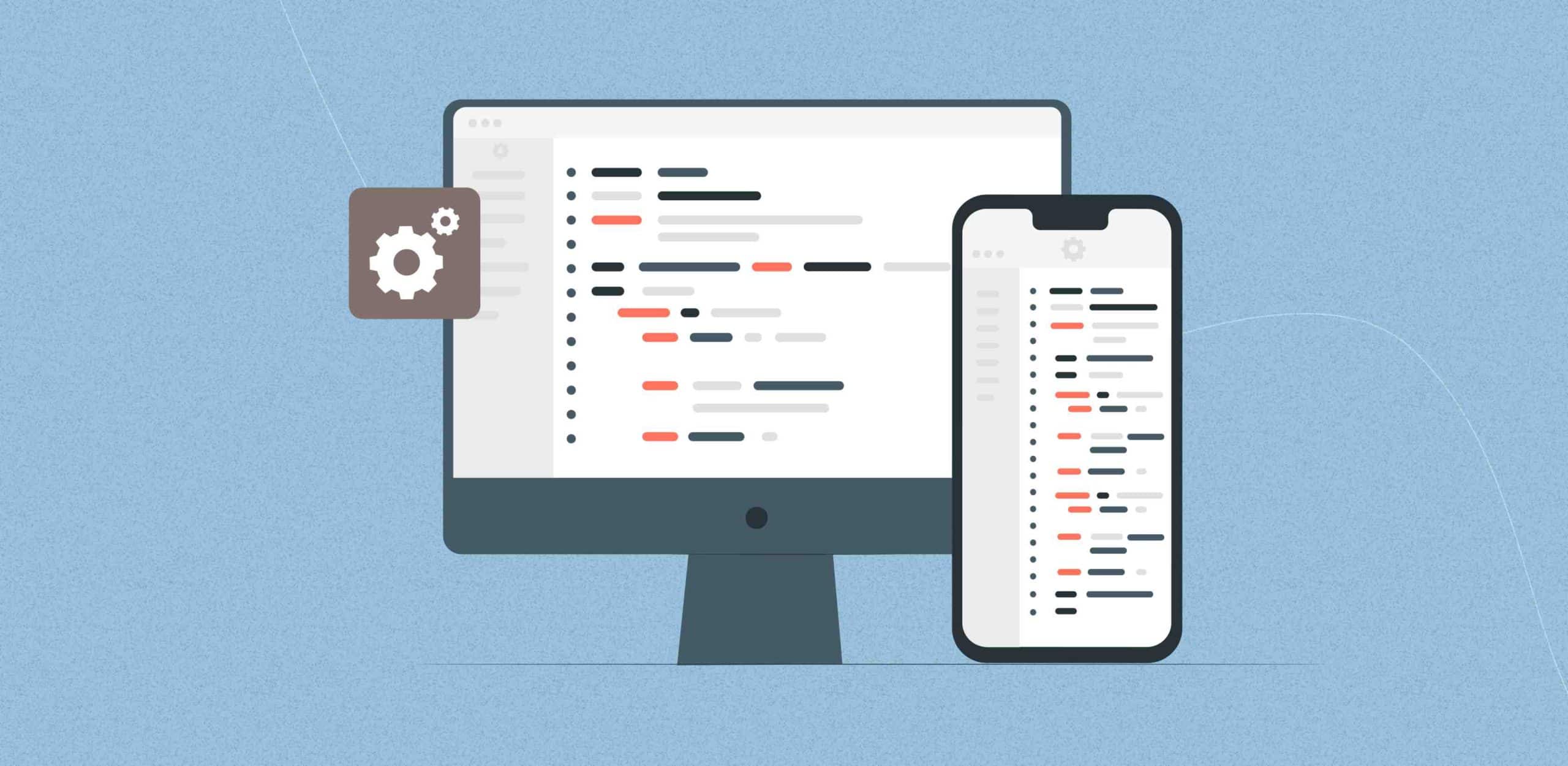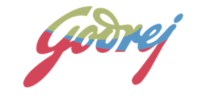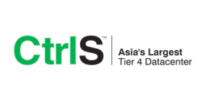A video chat application is an essential tool in today’s digital age, enabling communication that transcends traditional boundaries. Whether it’s for business meetings, remote learning, telehealth, or social interaction, the demand for scalable video chat applications has never been higher. This blog post will guide you through the essentials of building scalable video chat applications, from understanding the basics to exploring the best practices, development processes, and technological requirements.
What is a Video Chat Application and What are the Different Types of Video Chat Applications?
A video chat application allows users to communicate in real-time using audio and video. These applications have become indispensable tools for personal and professional communication. There are various types of video chat applications, each catering to different needs:
- One-to-One Video Chat Apps: These allow two users to communicate privately. Examples include WhatsApp and FaceTime.
- One-to-Many Video Chat Apps: These enable one user to broadcast to many viewers, often used for webinars or live streaming events. Examples include Facebook Live and YouTube Live.
- Many-to-Many Video Chat Apps: These support group video calls, where multiple participants can interact simultaneously. Examples include Zoom and Microsoft Teams.
- Video Conferencing Apps: Tailored for professional use, these include features like screen sharing, recording, and integration with other business tools. Examples include Zoom and Google Meet.
Read the article on ‘The Ultimate Guide to Create a Video Conferencing App like Zoom or Google Meet.’
Video Chat Application Development: Market Overview
The video chat application market is experiencing phenomenal growth. Factors like the increasing adoption of remote work culture, the rise of telehealth services, and the growing popularity of online education are fueling this expansion. According to a [source: Grand View Research report on video conferencing market], the global video conferencing market size was valued at USD 4.12 billion in 2022 and is projected to reach USD 14.02 billion by 2030, growing at a CAGR (Compound Annual Growth Rate) of 17.2% from 2023 to 2030. This surge in demand presents a significant opportunity for businesses to invest in developing scalable video chat applications.
This growth is fueled by the widespread adoption of remote work, online education, and telehealth services. Businesses are increasingly recognizing the importance of having scalable video chat applications to maintain seamless communication and collaboration. With advancements in technology and increasing internet penetration, the potential for video chat applications is limitless.
How Does Video Chat Application Development Take Place?
Video chat application development involves several stages, each crucial for creating a robust, scalable, and user-friendly product. Here’s a detailed step-by-step overview of the process:
1 . Requirement Analysis
The first step in a video chat application development is understanding the project requirements. This phase involves:
- Identifying the Target Audience: Determine who will use the application. Are they professionals, students, or casual users? Understanding the demographics helps tailor the application to meet their specific needs.
- Defining Key Features: Based on the target audience, identify the must-have features. These could include one-to-one calls, group calls, screen sharing, chat functionality, and more.
- Outlining the Project Scope: Clearly define the project’s scope, including timelines, milestones, and deliverables. This helps in setting realistic expectations and ensures that all stakeholders are on the same page.
2. UI/UX Design
Creating an intuitive and user-friendly interface is critical for user engagement and satisfaction. The UI/UX design phase involves:
- Wireframing: Create a basic layout of the application, focusing on the placement of elements and overall structure. Wireframes serve as blueprints for the design.
- Prototyping: Develop interactive prototypes to demonstrate the application’s flow and functionality. This allows stakeholders to visualize the end product and provide feedback early in the development process.
- User Testing: Conduct usability tests with a group of potential users to gather feedback on the design and make necessary adjustments. This ensures that the interface is intuitive and meets user expectations.
3. Choosing the Right Technology Stack
Selecting the appropriate technology stack is crucial for ensuring scalability, performance, and maintainability. Consider the following:
- Programming Languages: Choose languages suited for both frontend and backend development. Common choices include JavaScript for the frontend (with frameworks like React or Angular) and Node.js, Python, or Ruby on Rails for the backend.
- Frameworks: Use frameworks that facilitate rapid development and offer robust support for building scalable applications. For cross-platform development, consider React Native or Flutter.
- APIs and SDKs: Select APIs like WebRTC for real-time communication and Twilio for integrating video and audio features.
- Cloud Services: Use cloud platforms like AWS, Google Cloud, or Azure to ensure scalability and reliability.
4. Backend Development
The backend is the backbone of a video chat application, responsible for handling user data and facilitating real-time communication. Key steps in backend development include:
- Setting Up Servers: Deploy scalable servers to handle the application’s load. Cloud services offer flexible and scalable server solutions.
- Database Management: Choose a database that can efficiently store and retrieve user data. Popular choices include MongoDB, PostgreSQL, and Firebase.
- API Development: Develop robust APIs to manage communication between the frontend and backend. This includes handling user authentication, managing sessions, and facilitating real-time data transfer.
5. Frontend Development
The frontend is what users interact with, making it crucial for the application’s success. Frontend development involves:
- Building the User Interface: Develop a responsive and intuitive interface based on the UI/UX designs. Ensure compatibility across different devices and screen sizes.
- Implementing Functionality: Integrate features like user authentication, video and audio calling, chat, and file sharing. Ensure smooth navigation and interaction within the application.
6. Integration of Video and Audio APIs
For real-time video and audio communication, integrating reliable APIs is essential. WebRTC is a popular choice due to its open-source nature and robust performance. Steps include:
- Setting Up WebRTC: Configure WebRTC to handle peer-to-peer connections for video and audio communication.
- Integrating Additional APIs: Depending on the application’s requirements, integrate additional APIs for features like recording, virtual backgrounds, and more.
7. Testing and Quality Assurance
Thorough testing ensures a smooth user experience and minimizes bugs. The testing phase involves:
- Unit Testing: Test individual components and functions to ensure they work correctly.
- Integration Testing: Test the interaction between different components to ensure they work seamlessly together.
- User Acceptance Testing (UAT): Conduct testing with a group of end-users to gather feedback and identify any issues.
- Performance Testing: Ensure the application can handle high traffic and large numbers of concurrent users without performance degradation.
8. Deployment and Maintenance
Once development and testing are complete, the application is ready for deployment. This phase involves:
- Launching the Application: Deploy the application to production servers and make it available to users. Ensure a smooth launch by monitoring performance and addressing any immediate issues.
- Ongoing Support and Updates: Provide continuous maintenance and support to address bugs, implement new features, and ensure compatibility with new devices and operating systems. Regular updates keep the application secure and up-to-date.
Reach out to our experts at Enfin for a customized solution that ensures seamless and reliable communication.
Must-have Features in a Video Chat Application Development
To stand out in the competitive market, a video chat application must include a range of features that enhance user experience and ensure seamless communication. Here are some essential features to consider:
High-Quality Video and Audio
One of the fundamental requirements of a video chat application is the ability to provide high-quality video and audio. This ensures that users can communicate clearly and without interruptions. High-definition (HD) video and crystal-clear audio are crucial for a professional and pleasant user experience. Implementing adaptive bitrate streaming can help maintain quality even with varying internet speeds, ensuring that users have a consistent experience regardless of their network conditions.
User Authentication and Authorization
Security is paramount in any application, especially those handling sensitive communication data. User authentication and authorization mechanisms protect user data by ensuring that only authorized users can access the application. Common methods include email and password logins, two-factor authentication (2FA), and OAuth. These measures help prevent unauthorized access and protect personal information from being compromised.
Real-time Messaging
Integrating real-time messaging alongside video calls enhances the communication experience by allowing users to share text messages instantly. This feature is particularly useful for sharing quick information, links, or notes without interrupting the video call. It provides a comprehensive communication solution within the same platform, making interactions more efficient and dynamic
Screen Sharing
Screen sharing is a crucial feature for collaborative work, online education, and presentations. It allows users to share their screen with others in the call, making it easier to demonstrate processes, show documents, or present slides. This feature is especially valuable in professional settings where collaboration and visual aids are essential for effective communication.
Recording
The ability to record video calls is a highly sought-after feature, particularly for business meetings, online classes, and telehealth consultations. Recording allows users to save their calls for future reference, ensuring that important information is not lost. It can also be useful for creating training materials or keeping records of discussions for compliance purposes.
Virtual Backgrounds
Offering users the option to customize their backgrounds with virtual images or blurred effects can significantly enhance the user experience. Virtual backgrounds provide privacy by hiding the actual background and allow users to maintain a professional appearance even when they are in less-than-ideal environments. This feature has become increasingly popular for remote work and virtual meetings.
File Sharing
Enabling users to share documents, images, and other media during a video call adds a layer of convenience and functionality to the application. File sharing allows participants to quickly exchange information and collaborate on documents without leaving the application. This integration streamlines workflows and enhances productivity during calls.
Cross-Platform Support
To reach a broader audience, a video chat application must be compatible with various devices and operating systems. Cross-platform support ensures that users can access the application from their smartphones, tablets, desktops, and web browsers. Developing with frameworks like React Native or Flutter can help achieve this compatibility, providing a seamless experience across different platforms.
End-to-End Encryption
Protecting user privacy is critical in video chat applications. End-to-end encryption ensures that the video and audio streams are encrypted from the sender to the receiver, preventing unauthorized access during transmission. This level of security is essential for maintaining user trust and complying with privacy regulations, particularly for applications used in sensitive fields like healthcare and finance.
How Much Does it Cost for a Video Chat Application Development?
The cost of a video chat application development can vary significantly based on various factors. Understanding these factors can help businesses better estimate their budget and make informed decisions during the development process. Here’s a detailed breakdown of what influences the cost of building a video chat application:
App Complexity
The complexity of the application is a primary factor that affects development costs. Here’s how complexity can influence pricing:
- Basic Applications: A basic video chat application with essential features such as one-to-one video calls, text chat, and user authentication typically costs between $30,000 and $50,000. These applications usually involve simple interfaces and standard functionalities.
- Advanced Applications: Applications with advanced features such as group video calls, screen sharing, virtual backgrounds, and high-definition video quality will significantly increase the development cost. For feature-rich applications, the cost can exceed $100,000. These features require more sophisticated technology and extensive testing, contributing to higher costs.
Design Requirements
Design plays a crucial role in user engagement and overall satisfaction. Custom UI/UX design can add to the cost, as follows:
- Standard Designs: Using pre-built templates and standard design elements can keep costs lower. Many video chat applications use off-the-shelf designs that are functional but may not offer a unique brand experience.
- Custom Designs: Investing in custom UI/UX design provides a unique, tailored experience that aligns with your brand identity. Custom designs involve more time for research, prototyping, and user testing, which can increase development costs. Expect to pay a premium for bespoke designs that offer a distinct user experience and incorporate complex design elements.
Developer Expertise
The level of expertise required for development significantly impacts the cost:
- Junior Developers: Hiring less experienced developers or freelancers can be more budget-friendly. However, their limited experience may result in longer development times and potential quality issues.
- Experienced Developers: Experienced developers or development agencies with a track record in video chat application development can command higher rates. Their expertise ensures that the application is developed efficiently and meets high standards of quality and performance. The cost may be higher, but the investment can lead to a more reliable and robust application.
Maintenance and Updates
Ongoing maintenance and updates are essential for keeping your video chat application functional and secure. These costs include:
- Bug Fixes: Addressing issues and bugs that arise post-launch is a continuous process. Regular maintenance ensures that the application remains stable and performs optimally.
- Feature Updates: As user needs evolve, new features or enhancements may be required. Regular updates keep the application competitive and aligned with current trends and technologies.
- Security Patches: Ensuring that the application is protected against new security threats involves periodic updates and security patches. This is crucial for maintaining user trust and protecting sensitive data.
Tech Stack Used for Video Chat Application Development
Choosing the right technology stack is critical for building a scalable and efficient video chat application. A well-chosen tech stack ensures that your application can handle user demands, perform reliably, and provide a seamless experience. Below is a detailed overview of the essential technologies used in video chat application development:
Programming Languages
- JavaScript: As a core language for web development, JavaScript is essential for creating interactive and dynamic user interfaces. Its versatility allows developers to build both frontend and backend components using frameworks like Node.js.
- Swift (iOS): Swift is the programming language for iOS development, offering high performance and safety. It is used to build native video chat applications for iPhones and iPads, leveraging the full capabilities of Apple’s hardware and software.
- Kotlin (Android): Kotlin is the preferred language for Android development, offering modern syntax and interoperability with Java. It provides a smooth development experience for creating video chat apps on Android devices.
- Python: Known for its readability and ease of use, Python is often used in backend development. It’s popular for integrating various services and handling server-side logic, making it suitable for managing video chat application infrastructure.
Frameworks
- React Native: React Native allows for the development of cross-platform applications using JavaScript. It enables developers to write code once and deploy it on both iOS and Android platforms, significantly reducing development time and effort.
- Flutter: Developed by Google, Flutter is another powerful framework for cross-platform app development. It uses the Dart programming language and provides a rich set of pre-designed widgets, ensuring high performance and a consistent look and feel across different devices.
Backend Technologies
- Node.js: Node.js is a JavaScript runtime built on Chrome’s V8 engine. It’s known for its non-blocking, event-driven architecture, which is ideal for handling real-time applications like video chat. Its extensive ecosystem of libraries and frameworks makes it a popular choice for backend development.
- Django: Django is a high-level Python web framework that encourages rapid development and clean, pragmatic design. It is well-suited for building robust and scalable backend systems for video chat applications, offering built-in features like authentication and database management.
- Ruby on Rails: Ruby on Rails is a web application framework written in Ruby. It emphasizes convention over configuration and is known for its developer-friendly features and quick prototyping capabilities. It can be used to build the backend of video chat applications efficiently.
Databases
- MongoDB: MongoDB is a NoSQL database that provides high performance and scalability. Its document-oriented storage model is flexible, making it ideal for applications with dynamic schemas and large volumes of data, such as user profiles and chat logs.
- PostgreSQL: PostgreSQL is a powerful, open-source relational database known for its robustness and advanced features. It supports complex queries and transactions, making it suitable for applications requiring structured data storage and integrity.
- Firebase: Firebase, a platform by Google, offers a real-time NoSQL database along with other services like authentication and cloud messaging. It provides real-time synchronization and seamless integration with mobile apps, which is beneficial for building real-time video chat features.
APIs and SDKs
- WebRTC: WebRTC (Web Real-Time Communication) is a set of standards that enables real-time audio, video, and data sharing in web browsers and mobile applications. It provides the foundation for peer-to-peer communication, making it a crucial component for video chat applications.
- Twilio: Twilio offers a suite of APIs and SDKs for integrating voice, video, and messaging into applications. Its Video API allows developers to add video chat functionality with ease, providing features like recording, screen sharing, and real-time communication.
Cloud Services
- AWS (Amazon Web Services): AWS provides a comprehensive cloud computing platform with services for computing power, storage, and networking. It offers scalable infrastructure solutions such as EC2 for virtual servers and S3 for storage, which are essential for handling the dynamic demands of video chat applications.
- Google Cloud: Google Cloud offers a range of services for computing, data storage, and machine learning. Its scalable infrastructure, combined with tools like Google Kubernetes Engine (GKE) for container orchestration, supports the development and deployment of video chat applications.
- Azure: Microsoft Azure is a cloud computing platform offering services like virtual machines, databases, and AI tools. It supports scalable application development and deployment, making it a suitable choice for hosting and managing video chat applications.
DevOps Tools
- Docker: Docker provides containerization technology that allows developers to package applications and their dependencies into a single container. This ensures consistency across different environments and simplifies deployment and scaling of video chat applications.
- Kubernetes: Kubernetes is an open-source platform for automating the deployment, scaling, and management of containerized applications. It is often used in conjunction with Docker to manage complex applications and ensure they can handle high traffic and dynamic workloads.
Enfin’s Expertise in Video Chat Application Development
At Enfin, we are committed to building video chat applications that are not only functional but also robust and scalable, designed specifically to address the unique needs of each client. Our deep expertise in video chat application development allows us to leverage advanced technologies and industry best practices to deliver solutions that stand out in the competitive market.
Customized Solutions
We understand that every business has unique requirements and goals. That’s why we prioritize customized solutions tailored to your specific needs. Whether you’re looking to develop a video chat application for personal use, professional meetings, or large-scale webinars, our team works closely with you to define the scope and features of your project. We conduct thorough consultations and analyzes to ensure that our solutions align with your business objectives and deliver maximum value.
Scalability
In the fast-paced world of digital communication, scalability is crucial. Our approach to video chat application development emphasizes scalability, ensuring that your application can accommodate an increasing number of users without any degradation in performance. We achieve this by implementing scalable architecture and leveraging cloud-based infrastructure. Our team uses cutting-edge technologies such as WebRTC and containerization tools like Docker and Kubernetes to ensure that your application remains responsive and reliable, even under high traffic conditions.
Security
Security is a top priority for us, especially when dealing with sensitive user data. We implement the latest security protocols to safeguard your video chat application from potential threats. Our development practices include end-to-end encryption, secure authentication methods, and rigorous vulnerability assessments to ensure that your application meets the highest standards of data protection. We stay updated with the latest security trends and best practices to provide you with a secure and trustworthy platform.
User Experience
A great video chat application goes beyond functionality; it must also offer an exceptional user experience. Our design philosophy focuses on creating intuitive and engaging interfaces that enhance user satisfaction. We employ user-centered design principles, conducting usability testing and gathering feedback to refine the user interface (UI) and user experience (UX). From smooth video and audio quality to easy-to-navigate controls and visually appealing designs, our goal is to make every interaction with your application as seamless and enjoyable as possible.
Continuous Support
The development of a video chat application does not end with deployment. Ongoing support is essential to ensure the continued success and performance of your application. At Enfin, we offer continuous support that includes regular maintenance, updates, and troubleshooting. Our team is dedicated to addressing any issues that arise and implementing enhancements based on user feedback and evolving market trends. This proactive approach ensures that your application remains up-to-date, secure, and effective in meeting the needs of your users.
Conclusion
Building a scalable video chat application requires a meticulous approach, from selecting the right technology stack to integrating essential features that enhance user experience. As the demand for real-time communication continues to grow, investing in a high-quality video chat application can provide significant returns.
If you’re looking to develop or enhance your video chat application, look no further than Enfin. Our team of experts is ready to help you create a solution that meets your needs and exceeds your expectations. Contact us today to discuss your project and learn how we can help you achieve your goals in the dynamic world of video chat application development.
Let’s transform your business for a change that matters.
F. A. Q.
Do you have additional questions?
What are the key features of a scalable video chat application?
Essential features include high-quality video and audio, real-time messaging, screen sharing, recording, virtual backgrounds, file sharing, cross-platform support, and end-to-end encryption. These features enhance user experience and ensure the application can handle varying loads effectively.
How does WebRTC play a role in video chat application development?
WebRTC (Web Real-Time Communication) is a crucial technology for enabling real-time video and audio communication directly in web browsers. It supports peer-to-peer connections, reducing latency and improving the quality of video calls. WebRTC is integral to creating seamless and interactive video chat applications.
What factors influence the cost of developing a video chat application?
The cost of developing a video chat application can be influenced by several factors, including the complexity of the features, the technology stack used, the design requirements, the expertise of the development team, and ongoing maintenance needs. A basic application may cost $30,000 to $50,000, while a more advanced solution could exceed $100,000.
What are the benefits of using cloud-based infrastructure for video chat applications?
Cloud-based infrastructure offers benefits such as scalability, reliability, and cost-efficiency. It allows your video chat application to handle varying user loads, provides high availability, and reduces the need for significant upfront investments in physical hardware.
How can I ensure the security of my video chat application?
o ensure security, implement end-to-end encryption, use secure authentication methods, and conduct regular vulnerability assessments. Additionally, staying updated with the latest security trends and best practices is crucial for protecting user data and maintaining application integrity.
What are the common challenges in scaling a video chat application?
Common challenges include managing increased server loads, ensuring consistent video and audio quality, handling network latency, and maintaining security and privacy. Addressing these challenges requires careful planning and the use of scalable technologies and infrastructure
How can user experience be optimized in a video chat application?
Optimizing user experience involves designing intuitive and user-friendly interfaces, ensuring smooth video and audio performance, and incorporating features like virtual backgrounds and easy-to-use controls. Regular usability testing and feedback collection help refine the user interface and enhance overall satisfaction.
What role does the tech stack play in video chat application development?
The tech stack determines the tools, frameworks, and technologies used in development. For video chat applications, a well-chosen tech stack ensures smooth performance, scalability, and compatibility. Key components include programming languages (e.g., JavaScript), frameworks (e.g., React Native), and APIs (e.g., WebRTC).
How does Enfin approach the development of video chat applications?
Enfin takes a comprehensive approach to video chat application development, focusing on customized solutions, scalability, security, user experience, and continuous support. We work closely with clients to tailor solutions to their specific needs and provide ongoing maintenance and updates to ensure long-term success.
What should I consider when choosing a video chat application development company?
When selecting a development company, consider their expertise in video chat application development, their track record of successful projects, the technologies they use, their approach to customization and scalability, and the quality of their ongoing support. Ensuring that the company aligns with your project goals and requirements is key to a successful partnership.













